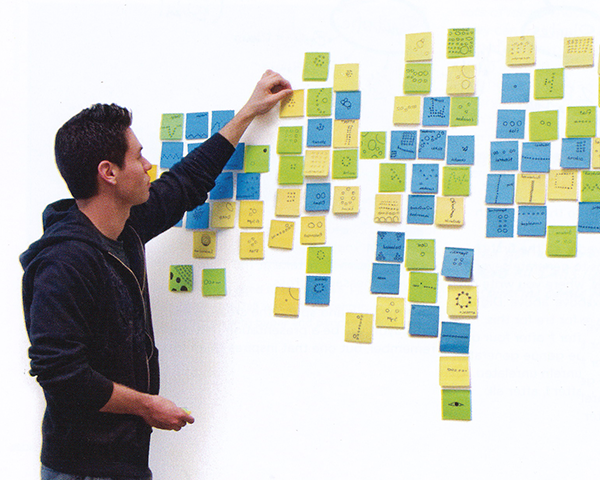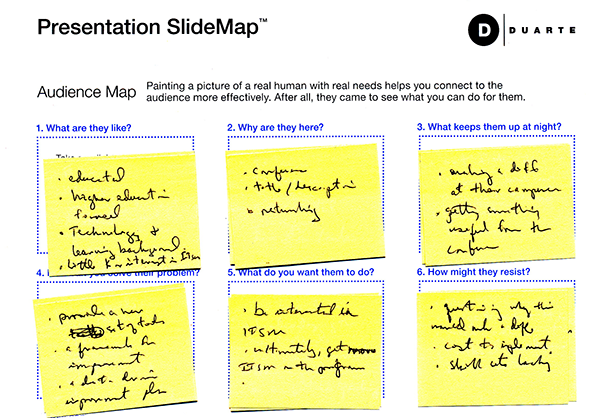
How many times have you heard an inspiring message, only to forget about it later? The best information in the world is meaningless if your story doesn’t stick with your audience.
On Thursday, January 30, during an engaging one-day Visual Story Workshop based on Nancy Duarte’s award-winning book, “Slide:ology,” Michael Duarte taught UTS Managers some valuable techniques on how to make their messages stick.
Stick to the Story
Michael generated lots of interest when he shared this compelling universal truth, “Never deliver a presentation you would not want to sit through.” It could be argued the audience is the most important part of any presentation. Whether your purpose is to inform, persuade, entertain, or motivate, good visual storytelling can be a useful tool to help the audience see what’s in it for them and inspire them into action.
Start with a clear understanding of who your audience is and what your key message is that you want to get across. Brainstorm what you want to present in your slide, and then began to craft visual stories around your content. Every story should have a beginning, middle and end in order for the audience to grasp your point.
Stick to the Point
Cut through the noise! Why is the audience there? You must invest time to prepare for your audience interaction. During the course of the workshop, one interesting exercise was to figure out what our audience cares more about. The exercise took way more time than you would expect… not minutes but hours.
We used sticky notes and a sharpie pen to generate audience ideas. Duarte believes if it takes more than a sticky note, your idea may be too complex for your audience. We examined what kept our prospective audience up at night, what we want them to do, and how might they resist.
According to Dave Hauenstein, UTS Storage Manager (Infrastructure), who has begun using these concepts in his presentations, “this is a tough principle in theory that requires time and effort but the payoff is significant. It is much easier to make a boring bullet-point presentation than to try to make it interesting! Through the Duarte process of evaluating audience and objective, I found that stories relating points from my presentation back to my career and to my duties at Emory got the most positive feedback.”

Duarte gave five important rules to abide by when doing a presentation:
- Tell the truth
- Get to the point
- Pick the right tool for the job
- Highlight what’s important
- Keep it simple
By the end of the workshop, the Managers learned to keep the slides simple, clear and concise. The audience will either read the slides or listen to you. They will not do both. The focus should be on the visual story told, not on the PowerPoint slides.
It is one thing to read about better presentations, another to do it. Learning how to be comfortable as a storyteller takes practice. Recently, at the Coordinator Meeting some of the UTS Managers followed these rules and showcased their improved presentation skills during a peer to peer presentation. Said Brett Coryell, OIT Deputy CIO, “I was particularly impressed with how much difference one rehearsal and a little feedback makes in the presentations.”
For more information on the power of Visual Storytelling visit http://www.duarte.com/.


Hey, really good post Rosa. Well written, interesting, high quality graphics, and a link for more information. I hope everyone reads this and puts it to use.
Great job Rosa! You did a wonderful job condensing a lot of information into a very detailed and interesting article.
Excellent Article, Rosa! You summed up the key elements of the Duarte presentation into a clear and concise article that will be very useful to people that have not attended the presentation!
Thanks everyone for commenting on the newsletter article. In keeping pace with the VisualStory workshop training, I decided early on to adopt a cheerleader role with the readers. This allowed me to focus on the topic and the word count!
Marisa, thank you for the helpful suggestions on “how to make my newsletter article pop!”
To Dave for taking the time to share his Duarte insights with me!
Brett, I certainly appreciate your inspirational post, although I can’t take full credit for the final visual published! My original images didn’t make it off the editor’s floor. However, I agreed to Norman’s selections, because it went well with the storyline.
At the end of the day, aside from a slightly bruised ego, I decided to stick to the story and save the clip art of President Lincoln for another day.
I congratulate you Rosa on a job well done. I appreciate how difficult it was hence I’m proud of the quality and substance you exhibited in the final product.
Really good article Rosa! I enjoyed it and it brought back home to me key points that were stressed in presentation courses that I’ve taken. Especially as it relates to preparation, getting to the point, sticking to the point, and keeping it simple.